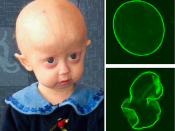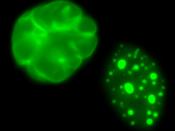Progeria
The uncommon genetic condition called Progeria is a disease where a child experiences the rapid speed of premature aging. This disease is also known as the Hutchinson Gilford Progeria syndrome. Progeria is caused by a mutation in the gene Lamin A protein, which causes a child to look more of an elderly person than their normal age. This unplanned change in the DNA makes the nuclear envelope inside a child unstable, becoming damaging for the brain. This leads to cells dying way faster than they are supposed to. From various researches, Progeria is not inherited from neither mother nor father. One in every one-hundred cases of Progeria is passed down from generation to generation.
The first case of Progeria was discovered by Dr. Jonathan Hutchinson in 1886, and the second case of this disease was also found by Doctor Hastings Gilford. Progeria has become to affect 4-8 million newborns.
Cases of Progeria have been found in countries like Argentina, Austria, Cuba, China, Germany, Mexico, the US, Puerto Rico, and Venezuela. The first cases of the disorder Progeria was first seen between the ages of 18-24 months. Statistics show that as of July 2012, Progeria has been represented in more than 92 cases across 33 countries.
Research has found that no parent expresses this gene at all in their DNA, but it occurs in a single egg or sperm before the conception of the child is done. The body systems that are affected by this disease are the muscular, artery, and cardiovascular system. The changes that begin with the child while they are young are not very deadly, but when the child reaches their teenage years they are at high risk of getting premature progeria. Some symptoms that are caused by the rare condition of Progeria are: aged...


